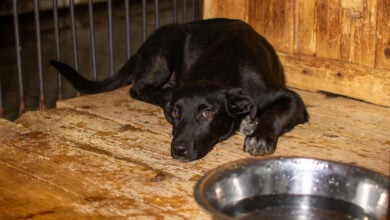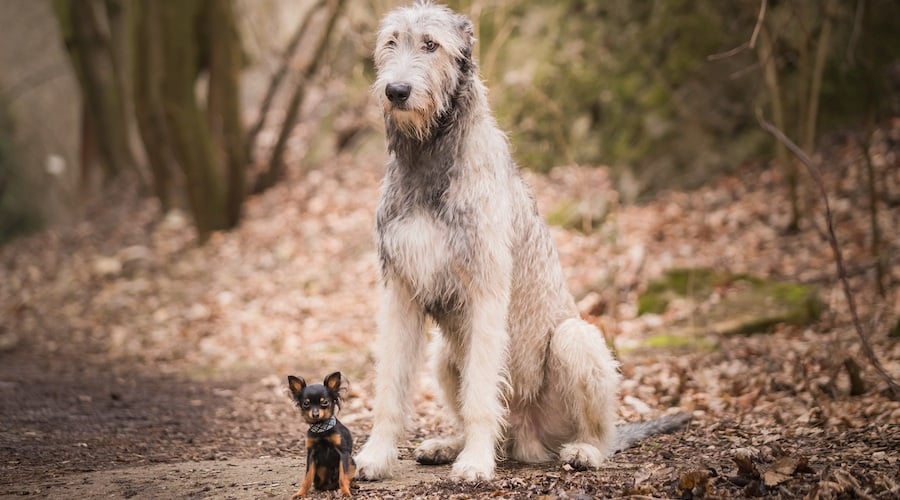Dogs In the Future: What Will They Look Like According To Artificial Intelligence & Experts?
When you purchase through links on our site, we may earn a commission. Here’s how it works.
Like any animal, our canines are constantly evolving. Therefore, their features have experienced gradual alterations over a prolonged period of time. Whether it’s environmental influences, such as global warming or due to excessive breeding – our dogs don’t look the same way they always have, and this could change further in the future.
Table of Contents
With global warming, flooding, and excessive breeding all potentially playing a part in how dogs in the future will look, we at Canine Journalare interested in exploring how our pups’ features could evolve.
To find out more, we turned to Artificial Intelligence (AI) image generation software Midjourney and Gencraft to investigate how dogs’ features could change over time due to outside influences. To do this, we used prompts requesting image generations focused on particular features and how they might look 100 years into the future before examining the results.
We also spoke to two experts in dog evolution and found out which dog types could become the most desired by humans in the future.
AI Predicts Dogs In The Future
We used the AI image generators Midjourney and Gencraft to create depictions of how a dog’s face and body features could evolve over the next 100 years due to influences from global warming.
Methodology
Based on the information provided by dog evolution experts Brenda Vitorino and Jéssica D’avila, we asked the A.I. to generate its depiction of the dog of the future. The prompt given to the AI was: ‘Dog, 4kg short thick and red fur, long feet, nose like a fox, dark eyes, long and pointed up ears’.
Disclaimer: The images below are strictly AI-generated.
Overall Appearance
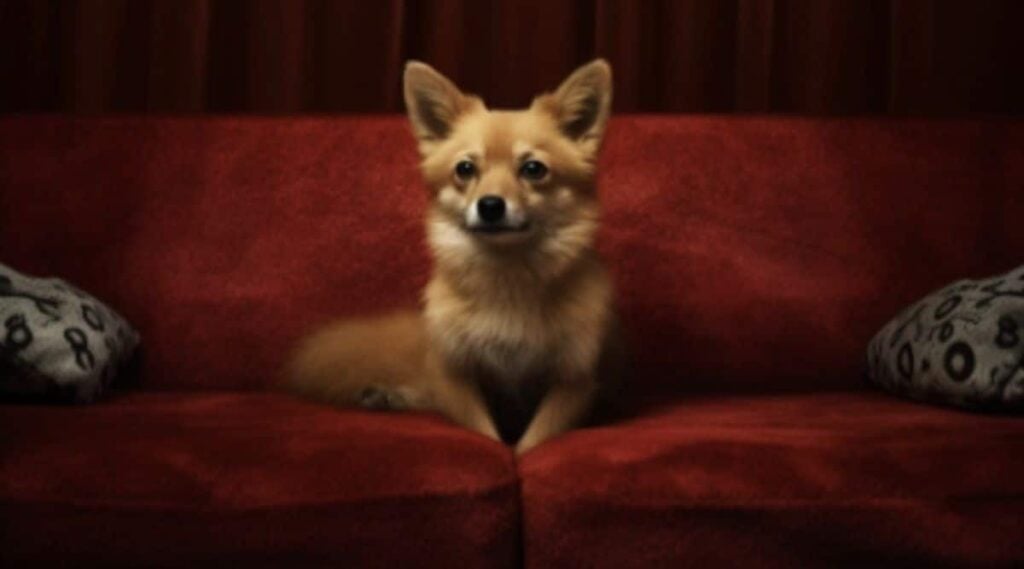
Given that the earth’s temperatures are set to continue to rise as a result of global warming, many of the features we’re familiar with seeing on our four-legged friends today could be set to change in years to come. While each of the 200+ breeds will take on their own interpretation of the characteristics covered here, there are likely to be some similarities due to climate-related factors.
As temperatures climb, we expect to see dogs that present more like foxes, with small bodies that are adapted for life in smaller homes. On average, dogs in the future will likely weigh between 4-10 kg, with a thick coat, short snout, and large ears that are pointed upwards.
Coat & Fur
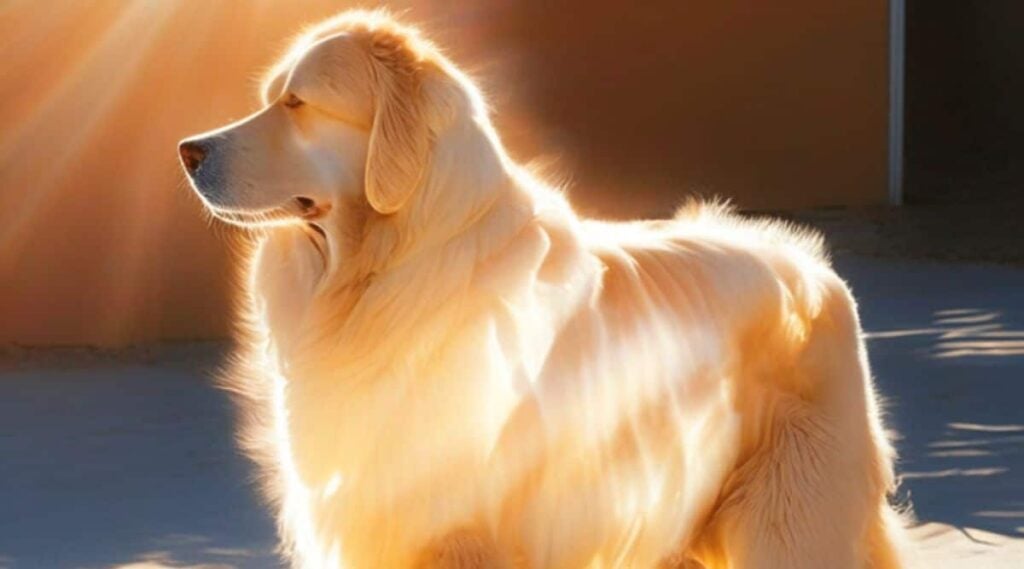
We examined the evolution of fur throughout the next century due to environmental changes such as global warming. It’s been reported by AnimalReport that fur is largely affected by surroundings. Therefore, a change in the environment could see a drastic effect on our animal’s fur.
According to Brenda Vitorino and Jéssica D’avila, experts in dog evolution, dogs 100 years from now will have thick coats. However, it is unlikely to be excessively thick. A thicker coat will aid with heat protection and defense from thermal radiation.
Similarly, fur colors will be light whites and creams to help reflect sunlight and keep the dog’s body temperature comfortable.
As seen in the AI-generated images, each dog is represented with puffy and wild fur. Global warming is expected to heat up the world’s atmosphere, which would ultimately lead to the globe’s moisture levels increasing. This would, in turn, lead to the ‘frizzy’ effect you see above, as the increased humidity from more moisture would lead to a wilder look.
Paws
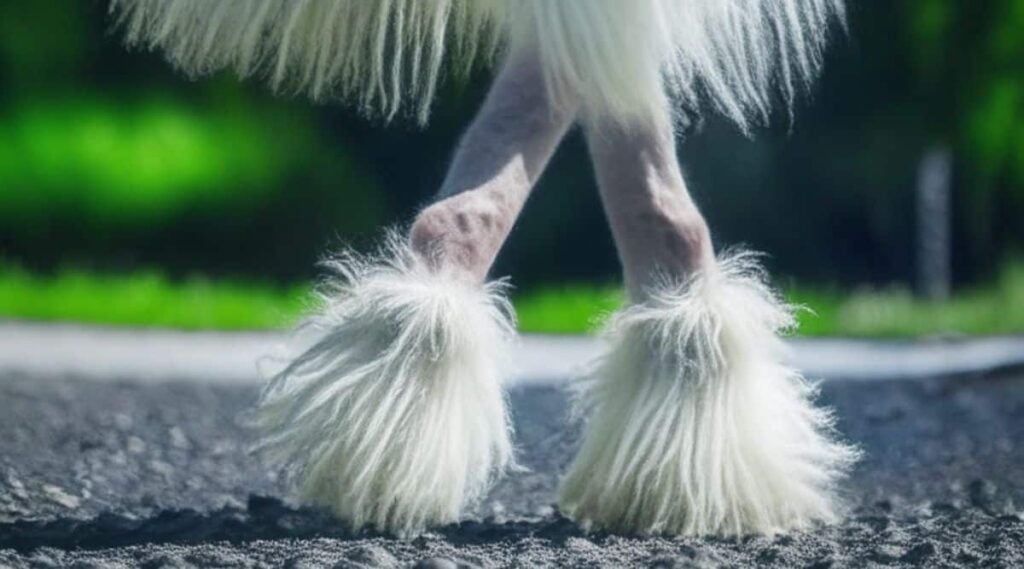
Moving on, we asked the AI to generate images of dogs’ paws to examine the effect environmental changes could pose. The fluctuation of temperatures and weather conditions threatened by the ongoing threat of climate change could lead to our canine’s paws looking quite different.
Already, owners are recommended to protect their pets from harsh winter conditions by utilizing snow boots that keep snow and ice from causing damage.
However, according to Vitorino and D’avila, dogs’ paws in the future may appear long and thin, with thick hair-like fur on the feet that better protects their paw pads from the hot ground.
Ears
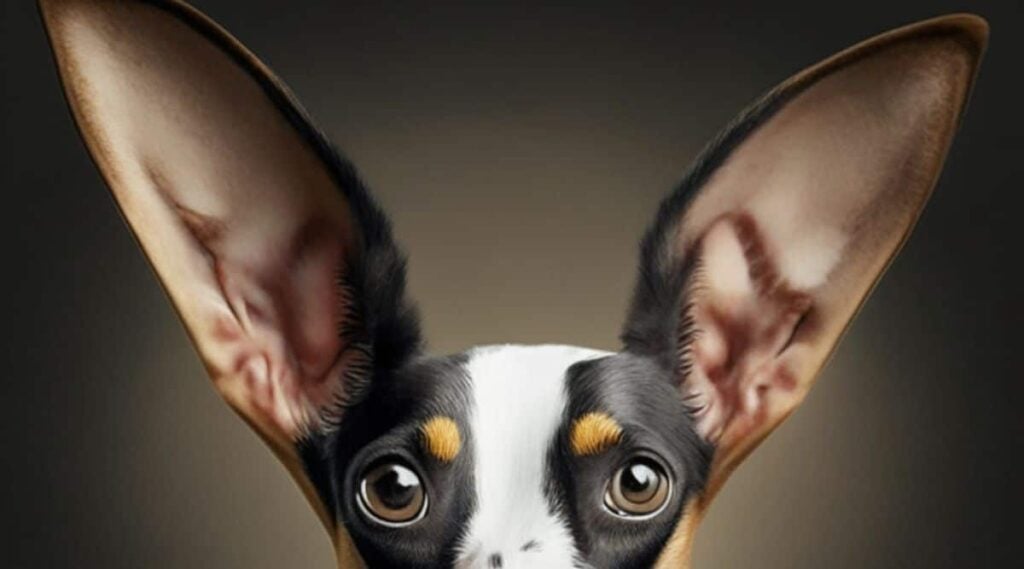
Following on from paws, we also wanted to examine the effect of environmental changes on dogs’ ears. Hotter, more humid conditions could lead to an increased chance of dogs developing ear infections, which means global warming could have an adverse influence on ear health as well as appearance.
As seen in the AI image depicted above, dogs’ ears are likely to become large and pointed, providing a large surface area that helps dogs regulate their temperature by emitting heat to keep the body cooler during heat waves.
A similar feature can already be seen in African Wild Dogs, which possess large, rounded ears which they use to radiate excess heat away from the body.
Noses
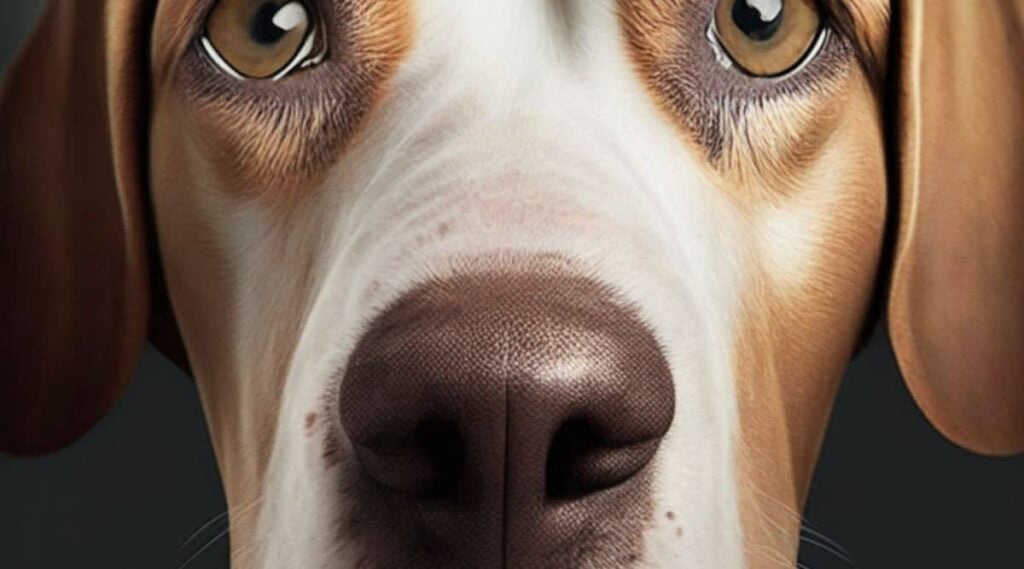
Dogs’ noses are incredibly important for both smelling and breathing. The fluctuation of temperature could lead to changes in the wetness of a canine’s nose. While a healthy dog usually has a slightly wet nose, the hotter climate could lead to chronically dry noses among our pets.
By preventing the nose from being too exposed to sunlight as a means of helping retain moisture, the dog of the future is likely to have a short nose and narrow snout, keeping the nose closer to the body. This is one of the ways the ‘future dog’ gets its fox-like appearance.
Experts Predict How Dogs Will Evolve Over The Next 100 Years
Now that we’ve examined how AI predicts dogs’ features to evolve over the next century due to environmental changes. Let’s hear what the experts have to say on this topic.
While the results of the AI-generated images are interesting, they shouldn’t be taken too literally. However, the experts who study the evolution of animals in greater depth can provide more accurate predictions.
Therefore, we spoke with Brenda Vitorino and Jéssica D’avila to find out how dogs’ physical and behavioral trends could change over the next 100 years.
Pet Owner Needs Evolution
Demand For Cats May Grow
Firstly, they believe that a lack of space in larger cities could make cats a more popular option in years to come:
‘’A growing demand for pets has already been observed, and dogs, for the time being, occupy first place in the ranking of the most popular pet species in households. However, with more people living alone and in smaller spaces, the growth of animals whose day-to-day care is more superficial, or at least requires less space, is latent. Therefore, estimates of the development of the feline population, mainly in larger cities, could surpass the canine population in numbers.’’
Breeders Create Smaller Pets
Therefore, breeding could come into play, with breeders creating a dog type to suit owners’ needs for a smaller animal. The experts explain in further detail:
‘’With that, the already existing tendency of hybridization and selection of breeds must be an alternative to “reduce” the size of species that pet owners love. An example of this is the mixture of the Siberian Husky breed with the Pomeranian breed, which “created” the new Pomsky breed, whose focus was to create a mini Husky.
Lower Maintenance Dogs Become More Popular
‘’In addition, adding to the current trend towards longer working hours, dog owners are expected to opt for animals that take up little space and require less maintenance and care. Therefore, many dog owners will opt for purebred dogs that have the following characteristics:
- Small or miniature size
- Low-shedding dogs that have or release little fur
- Silent or bark little
- Calm
- Sociable with other animals and people
- Independent but affectionate
- Not prone to disease
It’s interesting to discover the ways human needs could change over time, which, in turn, affects the future of dog characteristics. The change in lifestyle means an alteration in the trends of desired breeds, with many opting for low-maintenance and smaller dogs.
Physical Evolution Of Dogs
So, now that we know how our human needs might change, how do the experts project dogs’ physical traits to evolve over the next century? Speaking on the topic, they said:
‘’Physically, we can expect dogs that resemble the famous Chinese Crested Dog, with a small size, little or almost no hair (considered hypoallergenic), and a calm and friendly temperament.”
‘’Physical and behavioral modifications will be selected gradually and artificially. That is, dog breeders will set traits of commercial interest to “improve” the breed to satisfy human needs. We must also remember that these modifications for changes in characteristics take time (about eight generations) to be “fixed” in the breeds.’’
Climate-Adapting Technology
Lastly, the experts shared how humans have used technology to allow certain dog types to live comfortably in different environments, such as hotter or colder climates. This could continue in the future:
‘’In warm regions, dogs will wear UV-protective clothes as well as shoes to protect their paws from the ground’s heat. They may even use sunscreen. In cold climates, dog owners will provide coats, sweaters, blankets, and shoes for pets to stay warm.’’
Final Thoughts
While it’s difficult to predict the future, the expert advice shines some light on how we, as humans, directly influence dogs in the future. Our needs will have an effect on how these pets are bred, with certain breeds preferred to others depending on societal changes and evolving needs around the world.
With the projected rise in population and smaller living spaces, the experts note how smaller pets will become the preference of owners. Low-maintenance animals will also rise in popularity as people desire companionship without having to put in maximum effort.
Overall, our exploration into the dogs of the future proves very educational and informative. By utilizing both AI and experts, we are able to get a theoretical and visual understanding of how our pets could change over the next century.
While we should never take an AI’s word as truth, the image generations portray the potentially drastic effect that environmental changes such as climate change could have on pet health and traits.
Additionally, the expert advice highlights how humans influence the way breeds are shaped to our desires. They showcase how our evolving needs will affect the type of dogs and pets that become popular – with smaller breeds set to be favored even more in the future.
About The Experts
Jessica N. D’avila is an Animal Scientist from the Federal University of Rio Grande do Sul, currently pursuing a Master’s in Pet Nutrition Research alongside a postgraduate degree in Feed Factory Management. Jessica is focused on creating high-quality animal feed products by combining both her education and passion to make a significant industry impact.
Brenda Vitorino is a graduate of the Federal University of Rio Grande do Sul, currently pursuing a Master’s in Dog Nutrition and a postgraduate course in Feed Factory Management. She specializes in pet nutrition and consults for pet product manufacturers – alongside contributing to pet food formulation and facility implementation.
